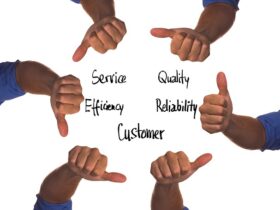The supply chain is the backbone of modern business, ensuring that raw materials, products, and services flow seamlessly across the globe to meet consumer demand. But in today’s unpredictable world, the risks to supply chains have escalated to an unprecedented level. Disruptions are inevitable, from natural calamities and geopolitical tensions to global pandemics and cyber threats.
Building a resilient supply chain isn’t just about preventing risks; it’s about ensuring that when the inevitable challenges arise, your business can adapt, recover, and even thrive. This article goes in-depth with mitigating supply chains from risks, real-life examples, and personal anecdotes to help you understand why resilience is more critical than ever.
What does supply chain resilience mean?
Supply chain resilience would, therefore, have to do with the potential of a supply chain to be able to predict, prepare for, respond to, and recover from sudden disruption. A truly resilient supply chain is not merely reactive but proactive, using data, technology, and strategies that minimize risk while sustaining business continuity.
Personal Anecdote: A few years ago, I worked with a small business owner who imported handmade goods from overseas. When a sudden hurricane devastated her supplier’s location, she faced months of delays and significant financial losses. Watching her scramble to find alternative suppliers taught me an important lesson: supply chain resilience isn’t optional; it’s essential.
Why Building Resilient Supply Chains Matters
1. Ensures Business Continuity: Supply chain disruption can thus stop production, delay shipment, and lead to lost revenues. A resilient supply chain handles the humps well and keeps operations running smoothly.
2. Safeguards Brand Reputation: Customer expectation revolves around reliability. If your supply chain issues stop you from delivering on the promise, there it is brand reputation suffers a hit. Resilience ensures consistency of service and maintains customers’ trust in one’s brand.
3. Reduces Financial Losses: Lost sales, expedited shipping, and other costs of supply chain disruptions quickly mount up. The resilient supply chain mitigates risks to save money over the long term.
4. Adapts to Market Changes: Resilient supply chains are flexible. Changes in the market due to changes in consumer taste or some other regulatory imperatives will make sure businesses remain competitive.
Supply Chain Common Risks
Building resiliency requires an understanding of the risks that supply chains confront. Following are some of the more common ones:
| Type of Risk | Examples | Impact |
| Natural Disasters | Hurricanes, earthquakes, floods | Damaged infrastructure, delayed shipments |
| Geopolitical Risks | Trade wars, sanctions, political unrest | Supply shortages, increased costs |
| Cyber Threats | Data breaches, ransomware attacks | Compromised systems, financial losses |
| Pandemics | COVID-19, influenza outbreaks | Disrupted logistics, workforce shortages |
| Market Volatility | Sudden demand spikes, price fluctuations | Stockouts, overstocking, revenue loss |
Strategies for Resilient Supply Chains
Whereas risks are inevitable, a firm can implement mitigating strategies. Primary approaches to strengthen supply chains include the following:
1. Diversify Supplier Base: Sole reliance on one supplier or geographic location is an inviting vulnerability. Diversifying a supplier base means that once a source is disrupted, others will fill the need.
Example: During the COVID-19 pandemic, all companies whose operations depended much on a supplier in one region faced significant challenges. Those with diversified networks could adapt sooner.
2. Invest in Technology and Data Analytics: Technology plays a vital role in supply chain resilience. AI, machine learning, and real-time data analytics are some of the basic tools that help identify risks and predict disruptions well in advance:
- Track inventories in real time.
- Use predictive analytics to predict demand and any possible risks.
- Employ blockchain in supply chain tracking for transparency and security.
Personal Experience: I once consulted with a company that had put in place a system of real-time tracking for its supply chain. When a delay in transportation occurred, the system immediately noticed it and allowed them to adjust the routing of the shipment to minimize the delay.
3. Plan Contingencies: Having a plan in place for responding to possible disruptions is paramount. Develop scenarios based on various risks and spell out concrete ways to mitigate those things.
- Consider developing a backup transportation route.
- Develop backup suppliers.
- Provide training so employees can respond properly in crises.
4. Engage with Partners: The strength of a relationship with suppliers, manufacturers, and logisticians ensures good communication and coordination during disruption. Collaboration with transparency ensures problem-solving by all parties with increased speed.
5. Embrace Sustainability: Sustainability and resilience are interlinked. Reduction of dependency on scarce resources, and the adoption of environment-friendly procedures reduce risks and can ensure long-term stability.
6. Periodic Monitoring and Auditing: Continuously assess the efficiency and reliability of your supply chain. Regular auditing uncovers weaknesses and areas for enhancement, thereby keeping your supply chain strong.
Practical Examples of Supply Chains That Are Resilient
1. Toyota’s Lean Production System
Toyota has long been a leader in supply chain resilience. Its lean production system emphasizes efficiency, flexibility, and waste reduction. When disruptions occur, Toyota quickly reallocates resources and adjusts production schedules to minimize downtime.
2. Amazon’s Technological Advantage
Amazon uses advanced supply chain technology like robotics, AI, and real-time tracking to understand risks well in advance and respond appropriately. This technological edge makes it possible for Amazon to deliver products quickly even during periods of peak demand.
Benefits of a Resilient Supply Chain
| Benefit | Description |
| Improved Reliability | Consistently meet customer expectations, enhancing trust and loyalty. |
| Cost Savings | Reduce the financial impact of disruptions through proactive planning. |
| Faster Recovery | Bounce back from disruptions more quickly, minimizing downtime. |
| Competitive Advantage | Stay ahead of competitors by adapting to challenges effectively. |
| Enhanced Sustainability | Implement eco-friendly practices that support long-term resilience. |
Emotional Connection: Why Resilience Matters
When I think about resilience, I immediately think of a family friend who runs a small bakery. She suffered ingredient and delivery delays during the COVID-19 lockdowns. Instead of giving in and closing up shop, however, she adapted. She partnered with local farmers to keep herself stocked with ingredients, set up online ordering, and used social media to continue communicating with customers.
It’s a testimony of what it means to be resilient. Not just about business, but connected to purpose and community in the hour of challenges.
In conclusion, the building up of resilience within the supply chain lays the foundation for any business in the modern world. That would minimize the risk, and business continuity would be assured when there is a development of diverse suppliers, investment in technology, and encouragement of collaboration. Resilience isn’t just about survival; it’s about thriving in the face of challenges.
Remember, the strongest supply chains aren’t the ones that avoid every disruption-they’re the ones that adapt, recover, and come back stronger.


































“This is exactly what I was looking for, thank you!”
“Amazing post, keep up the good work!”
Thank you so much
very informative articles or reviews at this time.